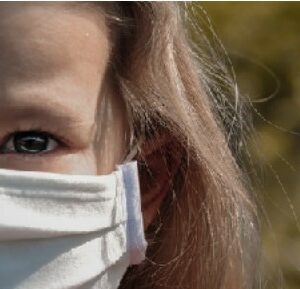With the mask mandate in Pennsylvania recently lifted, a new normal has begun to settle in.
The choice to walk into a grocery store with or without a mask now lies in the hands of the individual, and with the abrupt transition, it makes sense that people fall somewhere in between mask on or mask off.
However, to the surprise of some, it appears as if children are having the most trouble with the transition, struggling to adapt to a new, less secure world without fully understanding the breach in safety caused by the pandemic.
Some children may find it difficult to adjust to seeing unmasked people in everyday situations, especially with many schools still requiring them to wear masks in class and during certain activities.
“My daughter questioned over and over again why she no longer had to wear a mask in school and if it was safe to pull hers down at all. I let her know that she only had to remove it if she felt safe,’’ said Gabrielle Decker of New Britain.
For over a year, children heard a variety of reasons why wearing a mask was necessary. The mask not only promised protection from an unknown danger, but perhaps a much deeper level of social and emotional comfort for some.
Adolescent behaviorist Daniel Rodenhausen, who has been in practice for more than 35 years, offered some insight into the meaning behind the mask and how we can prepare our children for this reversal to normalcy.
“Wearing masks has been able to offer social support to many children,” he said, “especially those who have particular anxieties regarding how they perceive themselves physically. The masks can offer a type of barrier that may help them feel more secure in certain social situations.”
Those who suffer from social anxiety may see the mask as a tool to blend into the crowd, an extra layer to hide behind. Thus, the removal of this mask may bring up that associated trauma.
“There certainly can be trauma associated with the pandemic,” Rodenhausen continued. “The fears and behaviors connected to the pandemic were very tangible. This could have a more lasting effect on children who may have a tendency to anxiety and obsessive compulsive behavior.
“These children will likely have more difficulty transitioning to non-pandemic behavior, but this will dissipate with treatment and time,” he said.
It’s important to address this social anxiety directly, offering children some solace in knowing that the steps they have taken have created a safer world for many.
When discussing this aspect of the issue, Rodenhausen said, “To help children accept this transition of mask removal, it’s important to explain the science behind these decisions (to the degree that they can understand). These children will need to be reassured that they [and] we have done our part and that it’s now safe to return to non-mask wearing.”
Also, children are resilient and can generally adapt easily to change. In the early pandemic, younger children were less likely to question wearing a mask than most adults. Regardless of their keen ability to take a new direction, it’s important to ensure children are on the same page as their family and loved ones to make the shift as smooth as possible, he advised.
“In general, we try to be upfront and frank with our kids about everything they hear in the news and in grown-up conversations, while using kid-friendly language,” said Jill Farrara, a mom in the small Montgomery County community of Wyncote. “That there is a virus that is making a lot of people sick, and it’s our job to do our part to help stop the spread. I was nervous they would spend all day playing with the masks, but they adapted really quickly. This just became one more classroom expectation. At this point, they put their masks on before they leave the house and keep them on in the car even when they don’t need to.”
The social divide and anxiety that exists within adults and mask-wearing creates more of a tense environment for children in the ever-changing, day-to-day of pandemic, and keeping social circles on the same level will help minimize worry and doubt children have about moving forward to a mask-free environment, Rodenhausen said. With efforts and time, children as well as adults will learn to adjust to removing their masks and appreciate seeing each other’s faces once again.


